Dialogue: Intel’s Sustainable Vision
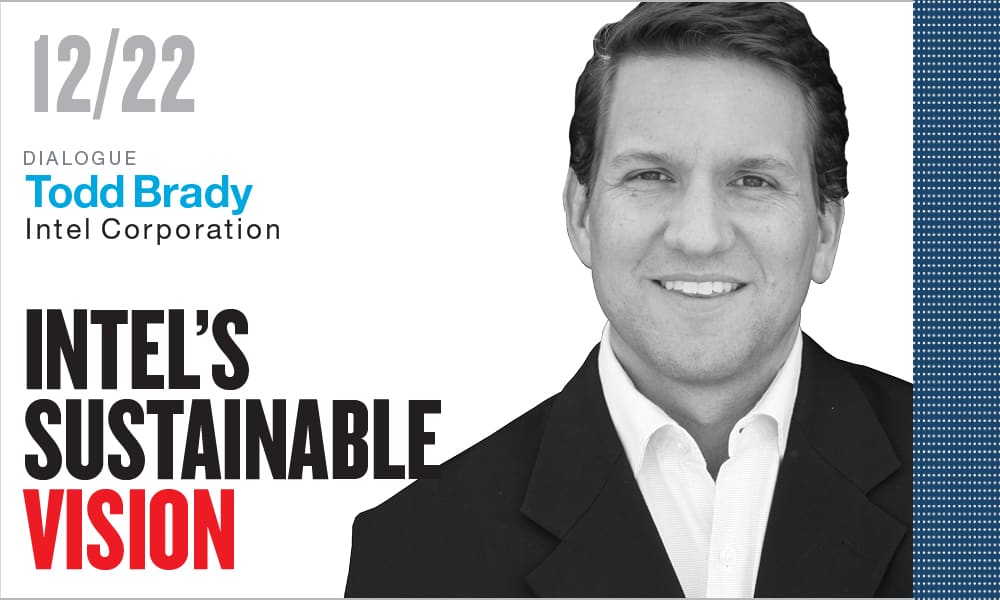
Manufacturers have a huge opportunity to create products that will drive global sustainability and make their businesses stronger, says Intel CSO, Todd Brady.

“I strongly believe that good business and sustainability practices go hand in hand.”
Todd Brady, Chief Sustainability Officer and Vice President, Global Public Affairs, Intel Corporation
Co-founded in 1968 by semiconductor pioneers Gordon Moore and Robert Noyce, and later led by the company’s third original employee, Andy Grove, during the high-growth 1980s and 90s, Intel Corporation is now the world’s largest semiconductor manufacturer with revenues of $79 billion and supported by 121,000 employees around the world.
Intel’s long tradition of focusing on and reporting its own sustainability performance over the last few decades has seen the company consistently ranked as a corporate environmental leader in industrial sustainability by numerous organizations, from Forbes to Dow Jones. In addition to successfully adopting its own internal sustainability programs, Intel has also become a leading initiator in numerous non-competitive coalitions aimed at driving more sustainable practices across broader industrial ecosystems.
In our latest interview with an industry thought-leader, Intel’s Chief Sustainability Officer, Todd Brady, talks to the MLC’s Executive Editor Paul Tate about the company’s own internal progress on environmental targets, the critical importance of harnessing digital technologies and AI in its sustainability efforts, engaging employees, suppliers, and even competitors in the process, and the pivotal role manufacturing can play in developing the products the world needs to meet urgent climate goals and create a more sustainable future.
Q: What excites you most about your role as Chief Sustainability Officer at Intel?
A: I strongly believe that good business and sustainability practices go hand in hand. The most rewarding part of that is making a difference in our day-to-day operations, our impact on the world, and our bottom line and the viability of the business. I truly believe that by making our operations more sustainable, we are making our business stronger. That’s something that really incentivizes me and gets me moving forward.
Q: What’s driving Intel’s sustainability initiatives?
A: Intel has been setting sustainability goals for several decades now, since around 1994. We set our latest round of goals and initiatives in 2020 with a 10-year vision of where we want to be by 2030. These cover key themes such as net zero greenhouse gas emissions, which we aim to achieve by 2040, net positive water, and zero waste to landfill. So, as we manufacture and make our products, how can we have a net zero or even net positive impact on the environment and the communities in which we operate? That’s the overall vision that we’re trying to achieve with these goals.
Q: What progress have you made so far?
A: We want to achieve net zero greenhouse gases by 2040 in our Scope 1 and 2 emissions. To do that, we’ve set a number of milestones. The first is to use 100% renewable energy globally by 2030. We’re a little over 80% today and we anticipate we’ll be about 90% by the end of this year. We’re already 100% renewable in the US, Europe, Israel, and Malaysia.

“We’ve set a number of milestones. The first is to use 100% renewable energy globally by 2030. We’re a little over 80% today and we anticipate we’ll be about 90% by the end of this year.”
We also have a goal for Scope 3 greenhouse gas emissions for our supply chain that is a 30% reduction. We’ve taken a number of steps with our suppliers to engage and collectively work towards that goal. We see these sustainability issues as non-competitive and that we all need to work on collectively, both with our supply chain and with our competitors, at times.
Another goal is around water and our water use. Our goal is to be net positive water, so for every gallon of water we bring in and use in our manufacturing process, we’re returning a gallon or more water back to the community. We do that in two ways. One is by recycling, reclaiming, and reusing our water internally, and we’ve invested upwards of a billion dollars in that over the past decade. The second is by doing projects outside of Intel in the community, with NGOs, with government agencies, with farmers, and others, to support water conservation measures that put more water back into local streams and aquifers where we operate. This year we have just achieved net positive water in three locations where we operate – the US, India and Costa Rica.
Q: Does meeting some of these targets also involve adopting new circular economy approaches?
A: Yes. The circular economy is a big focus for us. We have goals as part of our 2030 framework, for example, to be zero waste to landfill and to upcycle over 60% of our manufacturing waste. The reason for that, again, goes back to the concept of tying together sustainability and the business. We need to look at our waste streams not as waste, but as something of value and not to look at them as something that we need to discard or get rid of. So, we’ve created a number of circular economy type solutions for a variety of different waste streams. Some of our fluoride waste streams are repurposed into cement. Some of our phosphorous waste streams are repurposed into fertilizer. Some of our solvents are recovered and either reused or resold as high value materials. Copper is another example. We use a lot of copper in semiconductors, so we have an extensive copper reclamation process and then we sell that for a profit into the reclaim market to be reused.
I think it’s about a change of mindset – not looking at waste as something that’s discarded, but instead looking at what value we can we get from it. That reduces our costs, and in some cases, generates a new revenue stream. And the more we look at it, the more we find new opportunities to create those circular loops.
Q: You mentioned that working closely with partners and competitors in broader, industry-wide ecosystems is important to making change happen. What role has Intel played in instigating these initiatives?
A: We’ve initiated a number of different coalitions over the years. Again, we have a history of doing this because we see these sustainability topics as non-competitive where collectively we need to work as an industry to solve some of the biggest challenges we face.
A couple of examples. Way back in 1998, we pulled the industry together to start working on reducing chemicals called perfluorocarbons, one of the greenhouse gases. As an industry, we committed voluntarily to reduce the overall emissions of those gases over time. For one company alone, it’s impossible to do. But working together, we have made significant reductions and even exceeded the goals we all set.

“It really is endless when you start thinking about all the different ways companies can use digital technologies to monitor, control, and then optimize their equipment, their operations, and how they are doing business.”
Another example is removing the lead from our products. When the European Union established the RoHS directive restricting hazardous substances, like lead, cadmium, chromium, and other heavy metals, again, that required us to come together as an industry and we helped form various coalitions looking to develop alternative solders to the traditional tin lead solder that was used in electronic products.
And last month, we launched the Semiconductor Climate Consortium across the industry, a new carbon initiative with 60 other companies where we’re working with all of our supply chain to tackle the remaining carbon emissions that we have as an industry and how we can go about doing that. So again, collectively we can accomplish much, much more by working together as an industry than we can independently.
Q: Do these groups deliver practical outcomes for their members, like new sustainability methodologies or tools?
A: Yes. For example, another industry group we’re involved in with MIT and many other IT companies, big OEMs, is called PAIA – Product Attribute to Impact Algorithm. It’s a carbon footprint methodology for calculating the lifecycle carbon footprint of electronic products. From there, companies can then figure out how to reduce that carbon footprint further. We’re strong believers in having that kind of open architecture so that we can all use the same standards and methodologies as we go forward.
Q: How important are digital technologies to driving the future of sustainability, both for companies and globally?
A: I believe digital technologies are a critical tool to help make the industry, and the world, more efficient and reduce its carbon emissions. While we’ve focused a lot on the carbon footprint of the company and the broader semiconductor industry, at the same time, we need to look at what we call the handprint, which is what we can actually do with our products to make the world more sustainable. I think that’s where IT industry is in a very unique situation because digital products can, and will, help make the world much more energy efficient and reduce carbon emissions.
A report out of Europe by GeSI a few years ago called SMARTer2030 estimated that for every ton of carbon emissions produced by the IT industry, there was the opportunity to reduce the world’s emissions by 10 tons, almost a 10 to one return, by enabling smarter manufacturing, smarter buildings, smarter infrastructure, smarter transportation, smarter agriculture, you name it. All of those are enormous opportunities. We can already see it happening by applying digital technologies in both our own operations and in many of our customers.
Q: Which digital technologies are making the most sustainable impact at Intel?
A: There are many, many different examples. Take some of the new office buildings that we’ve built. These have been designed from the ground up to be smart buildings, integrating sensors throughout to monitor and control everything from lighting to HVAC and all the facility systems. Many of these are now LEED Platinum certified buildings, achieving anywhere from 30 to 50% reductions in the amount of energy being used, as well as reductions in water consumption. By monitoring the building in real time and understanding where the people are, where you need lighting, where you need cooling, heating, etc., you can make significant savings.

“Tapping into our people and their innovation is critical, because the engineers and technicians on the ground are the ones that know what’s going on within the business, within our operations.”
Another example would be in our manufacturing process. We have some big industrial equipment in use, and again, we’ve added additional sensors and monitoring and networking to optimize the performance. In our manufacturing and fabrication facilities we have a number of large industrial chillers which provide essential cooling, with maybe 20 or 30 chillers in a particular location. They are most efficient when they’re running near capacity, as opposed to very low load, and traditionally each of those chillers operated independently. Now we can link them all together and make them virtual, and by using AI and algorithms, we can optimize those chillers by changing the load depending on demand and monitor that in real time. Again, we’re seeing 20 to 30% less energy usage by integrating digital technology.
And as we dig into more and more sustainability opportunities using smart technologies including AI, we have been able to achieve very fast returns on investment of five years or less, often three years or less, and sometimes within a year. It really is endless when you start thinking about all the different ways companies can use digital technologies to monitor, control, and then optimize their equipment, their operations, and how they are doing business. Again, it’s that link between sustainability and good business.
Q: How are you engaging Intel’s workforce in this smart sustainability strategy?
A: Let me give you one example. When we started our energy efficiency program over a decade ago now, we did a call out to all our engineers around the world and said, “If you have an idea about how to make us more efficient, save money, and reduce our environmental impact, send it to us. We’ll fund it and take it from there. But it’s got to have a positive ROI and it’s got to have a positive environmental impact.”
I was blown away by how many ideas came forward. I think in the first year our budget was a million dollars – and we used it all up, just like that! Fast forward to today, and we’re now investing $30 million dollars a year on various energy efficiency projects, which are driven by our people, and by the engineers and the technicians who bring forward those ideas. Tapping into our people and their innovation is critical, because the engineers and technicians on the ground are the ones that know what’s going on within the business, within your operations.
The second example is that we’ve tied our employees’ bonuses to sustainability for over a decade. Everyone in the company is directly linked to our sustainability performance as a company. No matter what their role, whether it’s an attorney, a technician, a marketing person, whatever, there’s an incentive to think, “How can I help drive forward Intel’s sustainability agenda?” At the end of the day, everyone’s bonus is tied to how we do it and what we achieve. That’s another way we’ve been able to engage our people across the company.
Q: So, what level of priority do you think other manufacturing leadership teams should now be putting on sustainability for the years ahead?
A: There are many things driving the business case for sustainability today. One is simply driving efficiency in your own operations. They have a direct RoI and deliver cost savings and performance improvements in many areas.
But broadening the lens, our customers today absolutely expect us to be working on sustainability. And we also expect our own suppliers to be focused on sustainability too. It’s part of our supplier report card. When we judge our suppliers on how they’re doing, we look at their cost, we look at quality, we look at schedules, and whether they are meeting all of those core business aspects. But we also rate them and judge them on their sustainability performance. And we see the same from our own customers as well. So, for most manufacturers now, whatever product you’re producing, your customer wants a sustainable product to sell to their end customer, the consumer of that product. That’s becoming increasingly more evident as we talk on a regular basis with all our customers.

“I think the biggest challenge for the future is how do we continue to grow, both as Intel and as an industry, but continue to be more sustainable?”
The third area is with investors. I’ve been meeting with socially responsible investors, ESG investors, for almost 20 years now and I’ve seen a definite shift from a couple of decades ago. Back then there were only a handful of companies focused on socially responsible investing. Today it’s a who’s who of the investment community. You can’t find a big investment company that does not have an ESG research team. Increasingly, investors want to know that they are investing money in a company that is sustainable, is improving, and is thinking about how they can take actions to do so.
Lastly, governments. Sustainability regulations are increasing all around the world. We have many different proposals both in the US and the EU around climate reporting, CSR reporting, and so on. These are all raising the expectation that we are transparent as companies in terms of what our climate impact is, and what we’re doing to reduce that impact over time.
So, with all of those drivers, it is very clear that sustainability is not simply the issue of the day, but it’s becoming the norm and an expectation for all companies on how they will operate in the future.
Q: You mentioned scoring your suppliers on sustainability, increasingly important for Scope 3 reporting in the future. Does Intel actively help supplier companies, especially the smaller and medium sized suppliers who may not have the budgets or skills, to improve their own sustainability footprints?
A: It’s a great point because it’s easy to look to Intel or other multi-billion-dollar companies and say, ‘Well, you can induce sustainability because you have the resources.’ So, one of the things that we’ve done is to create supply chain summits and sustainability summits. We’ve held those for several years in Asia where we have a lot of our supply chain and a number of smaller companies and development companies who have asked for our help. At these summits we sit down and talk through what our expectations are, and what the various challenges are. It’s also a great opportunity for our suppliers to network together and learn what each other is doing. We’ve also held seminars and webinars on a variety of different topics to help our supply chain, and we’ve formed coalitions around supply chain improvements too.

“As we look forward to 2030, 2040, 2050, we as manufacturers now need to be looking ahead at where the world is going and produce the products that the world needs to address the planet’s sustainability challenges for the future.”
As we look at our own supply chain, renewable energy is a big opportunity. As a company, over half of our supply chain emissions are associated with energy use. So, I think driving more renewable energy sources and making those more readily available, are a significant opportunity and one that we, as manufacturers, should take advantage of.
Q: Looking ahead, what would you highlight as the greatest business challenges and opportunities for the manufacturing industry over the next five years?
A: I think the biggest challenge for the future is how do we continue to grow, both as Intel and as an industry, but continue to be more sustainable? We need manufacturing. Manufacturing is critical for the world and for global economic development. But how do we decouple that growth from increased resource usage? The expectation is certainly that we need to do that. We’ve got to all collectively get our greenhouse gas emissions down to zero. The issue is, how do we not grow our footprint as rapidly as we grow our businesses, and then continue to drive that at speed?
On the flip side, I think the big opportunity for the IT sector, and other manufacturing sectors as well, is that our innovation and products can be used to help make the world more sustainable. Look at renewable energy: we need renewable energy to achieve climate goals. But that renewable energy needs to be run on a smart grid because renewables are produced intermittently. You can’t have the same grid and controls that you have for a traditional coal fire power plant or natural gas plant that’s running 24/7. You need smarter technology to be able to route that green energy where it’s needed, and how it’s needed. So, there’s a big opportunity for new products and new services to get us there.
As we look forward to 2030, 2040, 2050, we as manufacturers now need to be looking ahead at where the world is going and produce the products that the world needs to address the planet’s sustainability challenges for the future.
Q: Finally, if you had to focus on one thing as a watchword or catchphrase for the future of manufacturing, what would that be?
A: For me, there are two things: sustainable manufacturing to make the business stronger and decoupling growth from an organization’s environmental footprint.
As an industry, we need to grow our businesses, and grow economically, but we need to decouple the environmental impact of economic growth. To do that, leaders have got to think out of the box. They have to think differently. By spending a little bit of money outside the company and partnering with key organizations or companies to create more sustainable approaches, organizations can achieve far more than they ever could by themselves in their own operations.
That out of the box thinking is really what’s needed as we go forward into the future. M

FACT FILE: Intel Corporation
HQ: Santa Clara, CA
Industry Sector: Semiconductors, computing, automation, AI
Sales: $79.02 Billion (2021)
Net Income: $19.87 Billion (2021)
Employees: 121,000 Employees
Presence: Global
Production Sites: 10 Primary Manufacturing Sites
Website: www.intel.com
EXECUTIVE PROFILE: Todd Brady
Title: Chief Sustainability Officer and Vice President, Global Public Affairs, Intel Corporation
Nationality: American
Education: BSc degree in chemical engineering, Brigham Young University; Masters’ degree in environmental engineering, University of Illinois, Urbana-Champaign.
Languages: English, Italian
Previous Roles Include:
– Global Public Affairs Director, Intel Corporation
– Corporate Sustainability Director, Intel Corporation
– Global Environmental, Health and Safety Director, Intel Corporation
– Corporate Environmental Director, Intel Corporation
– Product Ecology Manager, Intel Corporation
– Environmental Engineer and Manager, Intel Corporation
Other Industry Roles/Awards/Board Memberships
– Top 20 Sustainability Leaders, Sustainability Magazine
– Top 10 Outstanding Leaders, Advancing Science and Technology in Research/Business/Policy Pursuits, –
Scientific American
– #1 Most Sustainable Company, Barrons
– America’s Most Responsible Companies, Newsweek
– CDP “A” Ranking for Climate and Water
– Corporate Knights, Global 100 Most Sustainable Corporate Citizens
– Dow Jones Sustainability Index, North America Index
– Just Capital, Just 100
About the author:

Paul Tate is Co-founding Executive Editor and Senior Content Director of the NAM’s Manufacturing Leadership Council.
Technology Is at Center of ESG Efforts
Manufacturing Leadership Journal content and MLC resources are exclusively available to MLC members. Please sign up for an account or log in to view this content.
M2030: Making Business Model Innovation a Priority
Manufacturing Leadership Journal content and MLC resources are exclusively available to MLC members. Please sign up for an account or log in to view this content.
Digitalization, Sustainability, and Profit
Manufacturing Leadership Journal content and MLC resources are exclusively available to MLC members. Please sign up for an account or log in to view this content.
Getting Ahead of the Sustainability Curve
Manufacturing Leadership Journal content and MLC resources are exclusively available to MLC members. Please sign up for an account or log in to view this content.
A Tech-Forward Approach to Sustainable Manufacturing
Manufacturing Leadership Journal content and MLC resources are exclusively available to MLC members. Please sign up for an account or log in to view this content.
Low-Carbon Industrial Hubs: Driving Deep Decarbonization
Manufacturing Leadership Journal content and MLC resources are exclusively available to MLC members. Please sign up for an account or log in to view this content.
Are Your People On Board?
Cultural Transformation Is the Key to Success in Digital Transformation

Though once considered a radical concept in the eyes of some, the necessity of digital transformation is now embraced by most organizations. The question is no longer whether to digitally transform — it’s now how to do it. But often, those discussions focus myopically upon the technologies involved.
That’s a mistake.
People, after all, are the ones driving change. Technology is the tool they use to do so. If the attitudes, behaviors and goals of your organization’s people — your culture — are not on board with your digital transformation goals, your transformation will likely fail even if you have the right technology in place. Having clear alignment between your technical objectives and your company’s culture is essential for success — in fact, organizations that take a human-centric approach to digital transformation are 2.6 times more likely to see success.1
Five common business blockers to cultural change
There are several common stumbling blocks that may significantly impede your progress along the path to digital transformation. The most vexing challenges revolve around five key cultural issues:
- Organizational data isolated in functional or hierarchical silos.
- A lack of the skills needed to enable digital transformation.
- The breakdown of inter-team communication and collaboration.
- Cultural resistance to change rooted in lack of understanding of transformation goals.
- Fear and worry about job insecurity, or a lack of psychological safety, among employees.
Any one of these cultural barriers presents a significant speed bump to the transformation process. The presence of all five within a single organization — not an uncommon scenario — wreaks havoc upon an organization’s efforts to transform.
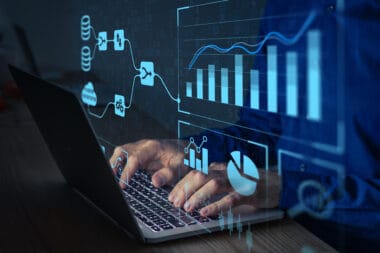
Stepping over those stumbling blocks
Transformation undeniably involves change — and change and human nature often have a stormy relationship. People tend to resist change, particularly when it makes them feel isolated or left behind. How can companies overcome these stumbling blocks to enable and encourage cultural change in support of digital transformation? The answer involves a mix of technology and people-centric management.
To eliminate data and skillset silos without disrupting your key business processes, you need to gradually build cross-functionality across teams. Consider using tools and techniques such as Kaizen (a management strategy that supports ongoing, incremental change), which many organizations have found to be crucial for success. A top-down commitment to opening silos is equally important; however, the true key to breaking down silos is about understanding, engaging and promoting collaboration across both the formal structures and the informal networks that exist across the organization.
Recently, research has found that the key to identifying and engaging these informal networks is by identifying influencers across an organization and engaging with them. Each silo represents a comfort zone for the group of employees that operates within that silo, and employees may be reluctant to move away from those comfort zones. By activating networks across the organization, company leadership can promote collaboration without incentivization.
 Similarly, it’s essential to nurture teamwide collaboration and communication in ways that are nonthreatening to individuals and team cultures. While specialized skillsets and knowledge specific to a team (or even a single task) is valuable to the entire organization, individuals who hold that knowledge often consider themselves the owners of that knowledge — an ownership that they may be reluctant to surrender for fear of diminishing their own value. Commending employees for exceptional knowledge sharing and skill development creates a culture of collaboration while promoting candid communication.
Similarly, it’s essential to nurture teamwide collaboration and communication in ways that are nonthreatening to individuals and team cultures. While specialized skillsets and knowledge specific to a team (or even a single task) is valuable to the entire organization, individuals who hold that knowledge often consider themselves the owners of that knowledge — an ownership that they may be reluctant to surrender for fear of diminishing their own value. Commending employees for exceptional knowledge sharing and skill development creates a culture of collaboration while promoting candid communication.
Innovation culture and success factors for digital transformation
Leadership should also be sensitive to the language used in communicating transformation initiatives. Phrases such as “breaking down silos” can feel threatening to people working in those so-called silos. Functional areas with their own domains of expertise and knowledge exist for important reasons — and will continue to exist — so leaders should instead talk about “weaving silos together” to achieve cross-functional integration while preserving the benefits of domain expertise.
Adopting agile approaches serves to foster the evolution of cultural shifts across teams, enabling them to be more cross functional. Another tool that can be highly effective in breaking down a range of barriers to collaboration and communication — including differences in age, gender and ethnicity — is reverse mentoring, where younger employees are paired with executive team members to help those executives connect with a younger demographic. Creativity, too, is important when it comes to breaking down cultural cliques. Even discouraging teams from keeping to themselves in settings like company cafeterias can be effective.
Finally, executive leadership, like all other members of the organization, must also evolve. They must embrace the goals of transformation and become comfortable with the higher levels of ambiguity that characterize today’s marketplace.
That said, technology does play a major role in supporting digital transformation initiatives. The right technology can make all the difference in fostering the cultural shift necessary for successful digital transformation. Today’s digital tools can guide effective collaboration, enhance efficiencies, enable standardization and encourage innovation. For example, Hitachi designed a cross-functional 2-day Smart Manufacturing Solution Envisioning Workshop for Logan Aluminum that helped key employees better understand the benefits of specific digital transformation initiatives.
Transformation is really about people
Business organizations are often perceived as lifeless, faceless entities. But in truth, each organization is a collection of people — people who must work together to make the business successful. That’s why it’s so important that everyone in your organization is on board with both the processes and goals of transformation.
Ultimately, fostering positive cultural shifts among your people is the best way — and, realistically, the only way — to ensure that your digital transformation goals can be achieved. Because, in the end, digital transformation is all about your people; a journey begun for your people and achieved by your people.
Hitachi’s Social Innovation imperative is all about unlocking value for society through the power of technology and people. For more tips about getting ahead by thinking ahead, visit our Social Innovation page.
About the authors:
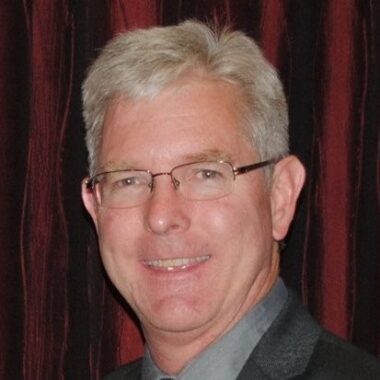 John Brinegar, Director, IoT Solution Architecture, Hitachi Vantara
John Brinegar, Director, IoT Solution Architecture, Hitachi Vantara
John Brinegar leads the Solution Architecture team at Hitachi Vantara, and has been leading IIoT projects at Hitachi customer sites for eight years. In addition, Brinegar led the architecture, development, and launch of Lumada Manufacturing Insights, an analytics platform for optimizing performance, maintenance and quality operations. He has extensive background deploying analytics systems into a variety of manufacturing sub-verticals, including electronics, pharma/biotech, metals, automotive, and others, along with IIoT software development and integration in telecommunications, health care, and enterprise markets.
 David R. Brousell, Co-Founder, Vice President and Executive Director Manufacturing Leadership Council
David R. Brousell, Co-Founder, Vice President and Executive Director Manufacturing Leadership Council
David R. Brousell is the Co-Founder, Vice President and Executive Director of the Manufacturing Leadership Council, the digital manufacturing arm of the National Association of Manufacturing, the largest association of manufacturers in the United States.
In his role as head of the MLC, Brousell sets the strategic direction of the organization and oversees day-to-day activities across the MLC’s portfolio of live and virtual events and thought-leadership content generation. Brousell is a member of the NAM Leadership Team and is also a member of the MLC’s Board of Governors. In his more than 40-year career, Brousell has served in numerous leadership positions in companies large and small.
1Errol Gardner, Norman Lonergan, Liz Fealy, “How transformations with humans at the center can double your success,” EY, June 24, 2022, https://www.ey.com/en_gl/consulting/how-transformations-with-humans-at-the-center-can-double-your-success.
Digital Tech is Cornerstone for Sustainability
MLC Master Class session with NTT DATA and Microsoft lays out formula for net-zero success
In his introduction to MLC’s recent Master Class session, Harnessing Digital Technology for a Sustainable Future, Paul Tate laid out the high stakes involved in sustainable manufacturing.
“This is one of the most existential challenges and sources of opportunity for the manufacturing industry over the next decade,” said Tate, MLC’s Co-Founding Executive Editor and Senior Content Director.
To get to a sustainable, net-zero future, application of both data and analytics are critical. During the Master Class, expert speakers Baskar Radhakrishnan of NTT DATA and Rebecca Christiansen of Microsoft defined the challenges and described how digital technology can help manufacturers accelerate decarbonization.
According to Christiansen, Microsoft’s Americas Azure IoT Specialist Director, nearly one-third of the world’s energy consumption and roughly 20% of CO2 emissions are attributable to the manufacturing industry. To help combat climate issues, she pointed to the 5,000 companies that have committed to net zero as part of the United Nations Race to Zero Campaign.
“While a lot of companies have made commitments, building the strategy, backing it with detailed plans and execution methodologies has been really tough,” Christiansen stated. “It’s really up to all of us, collectively, to figure out what technologies and what strategies should be implemented to go after this.”
Further, Baskar Radhakrishnan shared this must be looked at not only through the strategic lens, but also from a tactical, operational technology perspective.
“From a technology perspective, there is a lot of data available coming from the supply chain, coming from your OT systems, coming from all over your networks,” said Radhakrishnan, NTT DATA’s Strategic Advisor for Manufacturing. “But how you derive some meaningful insight out of that is a huge challenge.”
To show how sustainability investments can provide value, NTT DATA and Microsoft have partnered together to demonstrate quick return on investment for their customers. They have designed a production-level pilot that can be set up in a small-scale production environment at a customer site in less than 12 weeks. This allows the implementation team to show its organizational leaders the opportunity, value and positive ROI associated with investing in an energy management or a waste reduction system.
Beyond demonstrating ROI with this pilot, it is important to also look at sustainability from a business objectives perspective.
“There is a gamut of technologies involved,” Radhakrishnan said, “so technology is an enabler. It’s not going to solve your problem unless you have the process straightened out and unless you identify the range of possible options for transitioning towards the net-zero targets.”
In part because organizations cannot improve things they can’t measure, NTT DATA and Microsoft are using the Azure digital twin to help companies meet their sustainability goals.
“We tackle the problem of data by connecting directly to energy data sources – be it power meters, submeters on equipment, or utilizing building management systems. From there we create both real-time visibility to energy usage and provide analytics about the energy usage, trends, and patterns,” said Radhakrishnan.
According to the Master Class speakers, manufacturers shouldn’t be afraid or overwhelmed with the prospect of using digital twins in this process. While they can seem complex, they are simply virtual replicas of physical assets, or “high-fidelity digital representations of the physical world,” as Christiansen called them.
“Once you’ve got [the physical world] modeled, you can garner insights, you can look at consumption, you can look at interaction, you can think about how you can manipulate or even identify fault detection or anomalies in advance, which help you really optimize keeping your manufacturing line healthy, runtime up, and throughput maximized,” she said.
The outcomes from using digital twins are clear, including improved production capacity and inspection efficiency with reduced energy usage and CO2 emissions. Plus, the twin allows the user to look at energy management on many level: at the product, factory, or even supply chain levels. That includes progress toward net-zero goals.
“That’s extremely important because you’re completely taking the guesswork out of this,” said Radhakrishnan. “You need a systematic way of tracking, reporting, recording, and being able to model and show progress not only to your board but also to your external stakeholders as well as investors.”
In fact, he said, if you are not making progress, the digital twin in combination with artificial intelligence allows you to model and fix problems and see how you are progressing toward your vision.
Beyond the technology itself, the final piece to the puzzle is creating an organizational culture with proper funding, training, and resources.
“We’re seeing a lot of organizations hire chief sustainability officers,” said Christiansen. “That’s an incredible start, but that’s a single person. It has to come through the entire culture of a company.”
If the culture is not there, she warns, it will be a challenge to implement these changes.
As the Master Class demonstrated, net-zero goals are challenging, but they are also achievable. Digital technologies like NTT DATA and Microsoft’s production-level pilot can build a case to create sustainability programs that create substantial results. Establishing goals and a strategy, utilizing digital twins, analyzing the data and analytics, and creating an organizational culture where the entire company is behind the mission are all key to accelerating a decarbonization effort.
Visit NTT DATA’s sustainable manufacturing page to learn more about this topic.
The Next Phase of Digital Evolution: Business Model Innovation
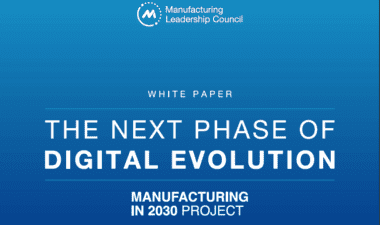 Data mastery and AI are key drivers for the future of manufacturing, say industry experts during a discussion of the MLC’s new Manufacturing in 2030 Project white paper.
Data mastery and AI are key drivers for the future of manufacturing, say industry experts during a discussion of the MLC’s new Manufacturing in 2030 Project white paper.
“Manufacturing is poised to unleash the next engine of production,” declared Manufacturing Leadership Council (MLC) Co-Founder David R. Brousell, in his opening remarks at the recent launch of the MLC’s white paper on the future of the industry, Manufacturing in 2030: The Next Phase of Digital Evolution.

The pandemic taught us, noted Brousell, that manufacturing needs to be able to act with greater agility and be better prepared for future disruptions, whatever form they may take. The MLC recognized the urgent need for manufacturers to take a longer view of things to come, he explained. The Manufacturing in 2030 Project has been created to help enable those companies to envision what manufacturing might look like by the year 2030, to better plan their future, and to help their leaders find new ways to enhance value, competitiveness, and their contribution to society.
Brousell was joined by a panel of industry experts from Manufacturing in 2030 Project partners EY, Infor, NTT DATA, and West Monroe, plus MLC Board Vice Chair, Dan Dwight, CEO of the Cooley Group. They went on discuss key highlights from the forward-looking 52-page white paper, which explores the multiple megatrends and industry themes that will dominate the manufacturing world by 2030, from demographic shifts and global economic trends to rapid advances in technology, new approaches to workforce development, and the importance of greater sustainability.
Optimism for the Future
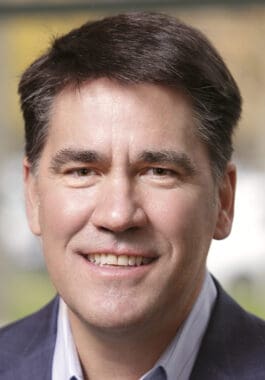
“For me, there are three reasons for optimism about manufacturing’s future,” commented Randal Kenworthy, Senior Partner and Consumer and Industrial Products Practice Leader at West Monroe. “The levels of investment in digital solutions that we are already seeing in manufacturing, the widespread recognition that manufacturing is essential to the future of the U.S. economy, and the opportunity to address one of the most existential challenges facing mankind: climate change. We have to solve this. Failure is not an option.”
“I certainly think digital is going to be the way of operation for survival in the future,” added Baskar Radhakrishnan, Senior Director, Manufacturing Industry Solutions at NTT DATA. Many of today’s factories are almost unrecognizable from the way they were 10 years ago, he observed. “And the industry is only going to continue to evolve. So, I envision future manufacturing organizations to be data driven digital enterprises, fully hyperconnected, with more distributed, agile, and value-driven ecosystems.”

Highlighting the impact of the numerous disruptive forces at play today, Brad Newman, Advanced Manufacturing & Mobility Industry Market Leader, Americas, at EY, noted that, “The collective sum of all those forces is creating a bias for action and a need for change.” The industry already has the building blocks and the technology tools in place today, he continued, “which will help business models to evolve to ensure functions are more connected and help build better and smarter products for people in more sustainable ways. All of this will make the manufacturing industry much more rewarding for all the workers and stakeholders involved.”
The Challenge of Complexity
While the accelerated adoption of ever-more powerful and intelligent digital technologies over the next few years will underpin many of those transformational changes, the huge increase in the volumes of data generated by those technologies will have its own challenges.

“It may take another 10 years to get to real maturity with AI, but that’s the technology we can see being highly important for the future,” commented Andrew Kinder, Senior Vice President International Strategy at Infor. “There are fantastic opportunities around AI and it’s only just beginning. But I think one of the challenges of that transition is that we have to pay more attention to data.”
Traditionally, noted KInder, manufacturing has always talked about people, processes, and technology, but he believes that companies now need to add data to that essential mix. “We’re already good at getting data, at streaming it into data lakes, and we’re getting better at turning it into actionable insights,” he added. “But now we need to focus much more on how we mature our data mastery for the years ahead.”
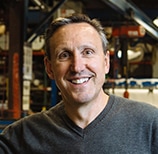
“But before you get to data mastery,” argued MLC Board Vice Chair, Dwight, “you first have to go from legacy to smart tech. The next phase then gets more complicated as the amount of data compounds and we start to adopt new AI approaches with complex algorithms. To make that work, we first need to develop confidence that the data we are gathering is telling us the right story and that becomes more complex as data volumes increase and spread across the enterprise. To cope with that, manufacturers need to be constantly rethinking their business model.”
And it’s not just about rising complexity within the four walls of the company, added EY’s Newman. “The bigger picture is looking at the end-to-end value chain,” he said. “For example, digitizing the supply chain with more accurate forecasting and optimized planning puts pressure on companies along the chain to catch up. As supply chains become more intelligent and complex, companies will need to be more flexible and agile to create more scalable and responsive digital platforms.”
New Business Models

However, warned Radhakrishnan at NTT DATA, “digital will become yesterday’s advantage if organizations are not thinking about moving to the next level. They must think differently about their transformation initiatives so that the traditional ways of operating become a thing of the past. So, with the people, processes, and digital infrastructures they create using new digital technologies, manufacturers should think about reinventing their business models with outcome-based business models, or usage-based business models, or product as a service, and offering their customers more customized products and services.”
Yet that’s a big step for many manufacturers, noted the MLC’s Brousell, and for some it may be a little scary.
“But to me,” added Cooley’s Dwight, “all manufacturing companies, regardless of their relationship to M4.0, demand reinvention. To rest too firmly on last year’s expectations and commitments, prevents your ability to evolve. As I say all the time, the only constant is change – and I don’t mean incremental change.”
“At Cooley,” he continued, “we went through a deep cultural transformation to break down silos to drive collaboration with the objective to become more adaptive and more agile. But for companies who are not change driven, who have not been investing in digitization, who are not rethinking and reinventing, they are the ones who are failing to see the power of digitization and the power of transforming on a constant basis.”
Leadership Advice for the Future
Brousell concluded the discussion by asking the panel: ”What’s your most important piece of advice for manufacturing leaders as they head to 2030?”
“Put together your strategic vision and plan,” responded Kenworthy at West Monroe, “If you don’t have that strategic vision for 2030, you need to start thinking about it now. That will set your roadmap for your digital roll out and plan for the future.”
“I think there a number of dimensions,“ added NTT DATA’s Radhakrishnan, “Develop a fully integrated strategy with very clear transformation goals; leadership commitment all the way from the Board and CEO to middle management; having the right team of high caliber tech talent and subject matter experts; adopt an agile mindset that will drive the broader adoption of digital technology; track progress and measure well-defined success; and, finally ensure there are business-led, modular, technology and data platforms to enable the real transformation”.
“Leaders also need to focus on people,” suggested Infor’s Kinder. “The talent shortage is global and it’s not going to go away. Technology will help, of course, and there is already a change from location centric, to human centric, so leaders need to focus on the reduction or elimination of any non-value-added tasks when intelligent equipment can do that and leave humans to do the high value decision making work. Focus on the people and bring the people with you.”
“Building a digital business ecosystem is only going to reach its full potential when the entire organization is digitally driven, and driven seamlessly across traditional functional lines,” said Dwight. “As the white paper says: ‘Digital is agnostic about functional boundaries.’ I believe this transformation is going to be the most difficult piece of digital evolution that leaders are going to have to grapple with.”
EY’s Newman also added his final thoughts: “While the future will be centered on cross-industry collaboration,” he observed, “I look forward to seeing the manufacturing industry take the lead when it comes to innovating new business models and engaging ecosystems. I think our ability to do this will wildly change the trajectory of the industry, driving better investments across safety, sustainability, technology, and most importantly, the development of our people.”
———-
* Download the full MLC White Paper, Manufacturing in 2030: The Next Phase of Digital Evolution
* Listen to the insights shared during the Manufacturing in 2030 White Paper Panel Discussion